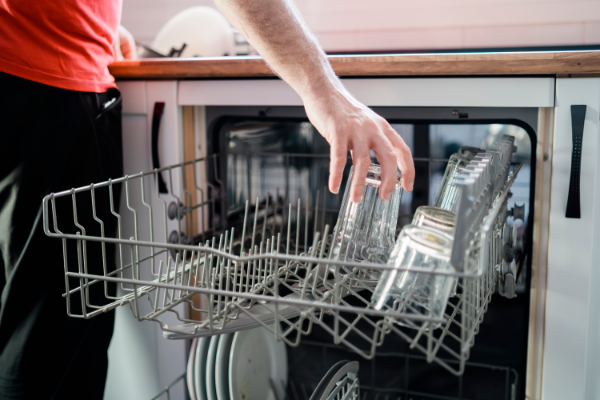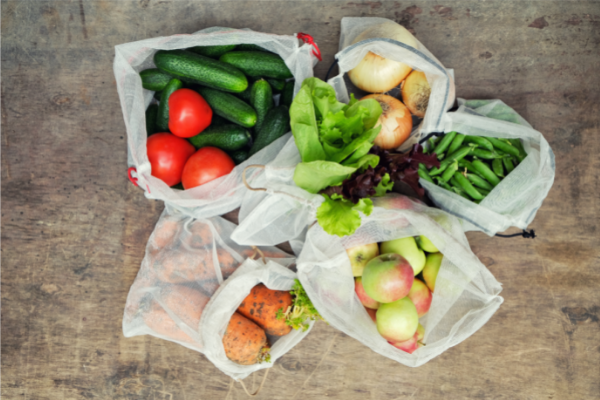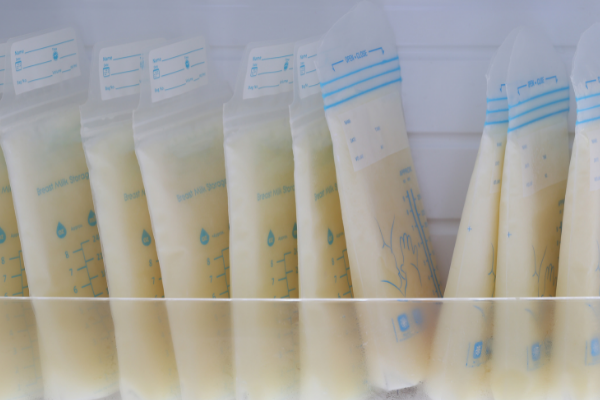The Best Way to Load a Dishwasher – The Ultimate Guide
Disclosure: This post may contain affiliate links and I may earn a small commission when you click on the links at no additional cost to you. As an Amazon affiliate I earn from qualifying purchases. You can read the full disclaimer here.
What is the Correct Way to Load a Dishwasher?
HIGHLIGHTS:
- Scrape! Don’t pre-rinse
- Top rack: cups, glasses, small bowls, delicates
- Lower rack: plates, platters, large items
- Silverware: mixed, all handles down except small knives
- Detergent: pods or tabs, plus a rinse aid
- Frequency: nightly, even if only half-full
Have you ever argued with a roommate, spouse, or even your kids about the best way to load a dishwasher? Or wasted precious time RE-loading the entire dishwasher after someone else loaded it “the wrong way?”
Maybe you’ve retrieved broken dishes or melted plastics because you or someone in your household didn’t properly load the dishwasher? Or had to rewash the entire load in frustration because they didn’t come clean?
When my husband and I were first married, this was one of our first heated disagreements. He wanted the mugs on the bottom; I thought their handles would break off. I wanted the knives pointing up with the rest of the silverware; he was afraid he’d accidentally impale his own hand.
As it turns out, there is indeed a CORRECT way to load the dishwasher, saving time, money, and water, so that everything comes out sparkling clean and nothing needs to be re-washed. (And we still have most of our wedding china intact to prove it.)
This definitive guide will show you how and why, debunk some old myths, and give you science-based reasoning to help you settle that age-old argument you’ve been having with your spouse, roommates, or kids forever.
Demystifying Long-held Beliefs about How to Load a Dishwasher
Does it matter how you load a dishwasher?
Anything worth doing is worth doing right.
Hunter S. Thompson
If you’ve ever opened the dishwasher after it’s just finished to find caked-on food remnants, pooled rinse-water, and your favorite mug missing it’s handle, you know that loading the dishwasher properly does matter.
No one wants to wash a sink full of dirty dishes AFTER the dishwasher should have already done the job for you.
Is it cheaper to wash dishes by hand or use a dishwasher?
A new Energy Star certified dishwasher uses about a quarter of the energy used when washing dishes by hand and saves more than 7,000 gallons of water each year! (Source: energystar.gov) Choosing a dishwasher over hand-washing adds up to $1,300 savings in energy and water, and over 230 hours of personal time every year!
That’s almost 10 DAYS of personal time!! (Wouldn’t you love to have that back?)
Choosing a dishwasher model that is the right size for your home and includes several wash cycle options help you optimize just how much time and money you’ll save. You can even get a portable countertop option, like this one from AIRMSEN, for your apartment, dorm, tiny home, or RV!
When you’re ready to shop for a new dishwasher, you’ll want to make sure it has:
- plenty of wash and dry options (including the choice to use hot or cold water)
- the capacity that will accommodate your daily dishes load and your kitchen space
- a good Energy Star rating
How full should you fill the dishwasher?
Is it sensible to run the dishwasher half-empty? According to Energy Star, dishwashers use about the same amount of energy and water regardless of the number of dishes inside, so run full loads whenever possible.
However, try to avoid overcrowding the dishwasher to maintain even circulation of water and detergent. No surface should be blocked, nested or overlapping. Hand wash just a few of the largest items to increase space, or save them for the next load.
Looking for a few extra items to fill a small load?
Grab your dog’s silicone chew toys, the microwave’s turntable, your baseball hat and workout gloves. Always check labels first, especially on items that are plastic. And be sure to secure the clothing items around tines of the top rack so that they won’t break loose and obstruct the spinning arm or water jets.
How often should you run a load in the dishwasher?
A good rule-of-thumb is to run the dishwasher daily each evening as you head off to bed. Utility companies generally charge higher rates per kWh during peak hours of the day. So running your dishwasher at night instead can save on electricity, gas, and water costs.
This also gives your dishwasher plenty of time to allow the dishes to fully dry as they cool before you unload them in the morning.
Before You Load the Dishwasher…
Should you pre-rinse (or pre-wash) your dishes before loading them in the dishwasher?
Ah, the great debate: to pre-rinse? Or not to pre-rinse?
The short answer is No. There is no need to pre-rinse! You should scrape dishes of as much food debris as possible as soon as possible after use, before loading. That means no more leaving dishes on the cabinet or in the sink for Mom to take care of later. Load them up right away!
Then run the dishwasher each night (even if it’s not completely full!) to prevent caked on mess, save water, and prevent foul smells building up.
For these messes, I like to use a simple nylon scraper, like these from Matscover. They’re super-durable and have one angular corner and 3 rounded corners, to get gunk out of any crevice without scratching. Then just drop them in the cutlery basket of your dishwasher, and close the lid!
BONUS HACK! These also work well to safely scrape frost and ice from your car’s side mirrors! Stash one easily in your coat pocket!
But be aware that without some food particles to cling to, the detergent may cling to your dishes’ material instead, leaving cloudy film residue that’s unsightly and causes dishes to wear down, crack and break easily.
If old habits die hard, and you simply MUST pre-rinse, try using the RINSE AND HOLD option on your dishwasher’s settings. Utilizing this mechanical rinse uses less water than you would go through manually, and allows you to use a shorter wash cycle later, thus saving water in the overall load.
The only exception to this rule may be high-protein and high-potassium food items like egg, soy, banana, and oatmeal. Scrape these under just a touch of running water as soon as possible after use and before loading them in your dishwasher.
Choosing the right dishwasher detergent
You may or may not know that back in 2010, most major manufacturers of dishwasher detergent transitioned to phosphate-free formulas. Since then, they have continually improved their cleaning power by implementing enzymes that cling to and separate food particles from your dishes.
This means that if you pre-rinse (or worse, WASH) the dishes before loading them in the dishwasher, those enzymes will instead cling to the materials of your dishes, leaving that nasty film, and causing them to corrode over time and eventually possibly break or chip.
In certain brands, this also means you can choose the temperature of the water used to run your dishwasher, saving further energy by washing with cold water and just using the heated rinse to sanitize your dishes.
When I moved to an area with hard water, it didn’t take long to notice that filmy residue building up every time I cleaned my dishes. I learned to add a water-softening salt to the salt unit which not only softens the water in my dishwasher, but it also removed the stubborn tea stains in the bottom of my mugs!
Should I use Powder? Liquid/Gel? Packets? Pods?
According to Consumer Reports (source: link), while liquid, gels, and powder detergents cost less per load, they just can’t match the cleaning power of top-rated detergent pacs, tablets, and pods.
You’ll also want to make sure to always store your detergent in a cool, dry area, to prevent the product clumping or sticking together. And because those hard-working enzymes do expire, detergent works best when it’s less than 2 months old. So make sure not to go crazy at Costco stocking up on a five-year supply.
Like this article? Why not try…
23 Hacks to Help You Save Money on Groceries!
Should I use a rinse aid in my dishwasher?
A rinse aid is designed to enhance the drying process by preventing spotting, film, and anything still clinging to your dishes before the drying cycle bakes it on. They contain surfactants which lower the surface tension of water, which is especially helpful in areas with hard water.
You can load a store-bought rinse aid (like this one from Lemishine) in the dispenser typically located on or next to your dishwasher’s detergent dispenser. Fill it to the top about once a month, and it will automatically dispense just enough during the final rinse cycle.
If you’re feeling thrifty, you could use distilled white vinegar instead. However, do NOT put vinegar in your rinse aid dispenser, as it could melt the rubber gaskets there, creating leaks! Instead, nest a small cup of vinegar upright in the top rack just before you run the dishwasher.
What you should NOT load in the dishwasher (and WHY)
Unfortunately, there is no official or universal “dishwasher safe” symbol. These three are commonly found, but not required on many items. They should not be confused with the “food-safe” icon.
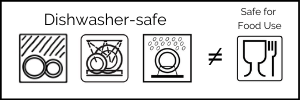
Not all plastics are dishwasher-safe! The heated conditions of a dishwasher’s cycles could cause BPA, Phthalates and other chemicals to leach out. Even BPA-free items may be substituted with other bisphenols that have similar harmful impact.
Also know that plastic doesn’t dry well, and may warp or flip over during the wash and rinse cycles, disrupting water and detergent from reaching your other dishes and trapping runoff.

Check the number code on any plastic items you wish to wash in the dishwasher. Generally, plastic #5 (polypropylene) is the most common plastic used for food storage lids and containers, and the only one durable enough to withstand the dishwasher’s heated temperatures.
And always place dishwasher-safe plastics on the top rack, where the water is cooler and the spray is a bit gentler. Or better still, hand wash them, and eliminate them from your household use as much as possible.
Reducing use of single-use plastics is one of
5 Reasons to Use Reusable Produce Bags
Find out the other 4 amazing reasons here!
Aluminum. Disposable aluminum containers are too fragile for the dishwasher. Heat can cause aluminum cookware to become darkened or pitted, particularly when touching nearby stainless steel, such as in your cutlery basket.
Bronze, pewter, or copper. The harsh chemicals in your dishwashing detergent can dull the finish, be corrosive, and cause these to pit.
Cast-iron. Detergents will strip away the non-stick surface it takes so long to build and leave the pan vulnerable to rust.
Gold, gold-leaf, or gold-plated. This metal is too soft to withstand mechanical dishwashing, and may chip or flake away.
Large knives. Wooden handles will crack and split. Sharp blades can cut into the wire rack’s coating, harboring bacterial growth. And knife edges can be easily knocked about, dulling, rusting, and damaging them in no time.
Sterling silver, or silver-plated. Will tarnish, sometimes irreparably.
Crystal. Heat and vibrations of a cycle can easily crack delicate crystal.
Fine China. If it is produced after 1979, you can risk washing it in the dishwasher only on the “light” or “china” setting. Be sure not to allow items to overlap or nest.
Insulated mugs. High heat can damage the vacuum seal, causing it to lose its insulating properties or leak.
Non-stick coated cookware. Over time, the coating will break down and flake off, ruining the finish.
Wooden utensils. Steam heat will cause it to crack, split, or become rough and misshapen.

How to Load the Dishes in the Dishwasher (What Goes Where and Why)
If your wire racks have angled tines, follow them to utilize space efficiently and maximize the load. If the tines are vertical, try to keep any inner surfaces of dishes angled slightly down and toward the center of the dishwasher. This will maximize water flow, speed drying time, and help prevent water pooling.
Top rack
Since the heated water will be sprayed from your dishwasher’s basin, the top rack gets the coolest water and a gentler spray. That means this is where you should load more delicate and small items, such as cups, glasses, mugs, small bowls, and dishwasher-safe plastics.
Mugs, cups, and glasses should be inserted open-end down, laid at a slight angle to improve water runoff. They should also be placed between tines, not over the tines. And not touching or so tight together that the vibrations of the cycle could cause them to crack or break.
For fine stemware such as wine glasses, many top racks include a flap that folds down to cradle stems. In case yours doesn’t, the soft rubbery silicone of this 4-piece stemware saver set will hold your delicate stemware in place in the dishwasher so that they are protected during even the most vigorous wash cycle.
Load small bowls between tines, at an angle to maximize space and exposure to detergent and water flow, ensuring proper runoff and preventing water collection. Also make sure that they are not overlapping or touching at the rims, which prevents water from cleaning the insides, and could also lead to cracks and chips.
Fit large cooking utensils and serving spoons in the spaces between dishes, flat and facing down. (That is, unless your dishwasher has a third rack above for flatware.)
And be sure not to make the mistake of hanging linked measuring spoons from the top rack, as this can inadvertently disrupt the spinning arm from doing its job.
Bottom rack
The bottom rack is where you’ll want to load all your dinner plates, saucers, and ceramic or glass bakeware. Stagger small and large items when possible, angled slightly down, leaning towards the center of the dishwasher.
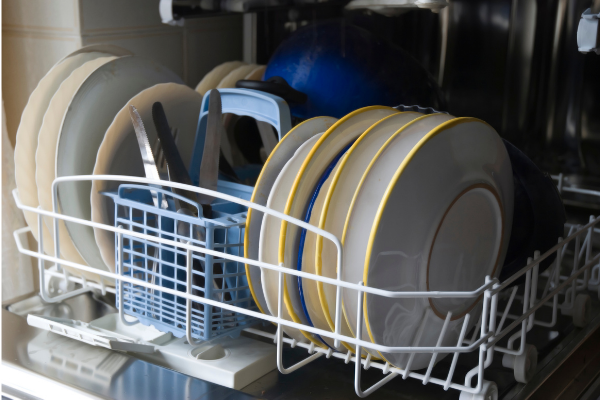
Load large flat items such as baking sheets, cutting boards, or even your microwave’s glass turntable around the perimeter of the lower rack.
Load pots and pans on the bottom rack facing down, taking care not to let the handles rest against breakables such as glass and ceramic. The vibrations of the dishwasher’s cycle could create chips and cracks.
How to load silverware in the dishwasher
Whether you call your eating utensils “cutlery,” “silverware,” or “flatware,” there’s a basket for that! In most dishwashers, you will find this basket pre-nestled on the bottom rack, to the back or one side.
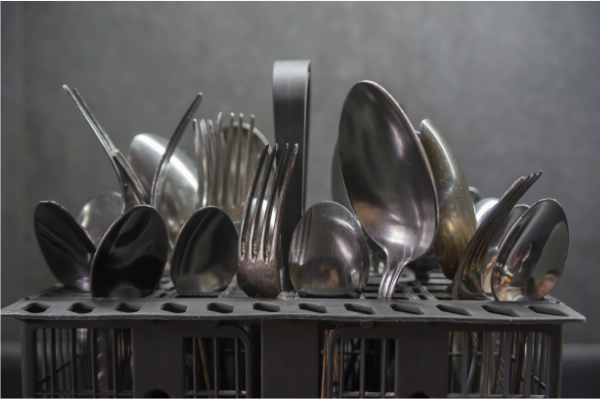
In some dishwashers, you will find it flat on the inside of the door. Some very modern dishwashers have a separate, shallow third rack along the upper rim of the dishwasher where flatware can be laid… flat.
Flatware should be mixed in alternating directions, so as not to nest together. Drop any jar lids or small scrapers into the basket, then fold down the basket’s flap. Use the grid or slots on that flap to ensure individual items are separated. (And insert unnecessary “don’t let your spoons spoon!” joke here.)
All eating utensils should be placed with handles down to maximize the eating surfaces’ exposure to water and detergent. The exception to this rule is KNIVES, which should always be placed in the basket pointing down to prevent stabbing accidents when loading or unloading.
Or… if your household is like mine, with mischievous children and spouses who are stubborn and would rather compromise than capitulate, just wash all knives by hand. Be sure to dry them with a towel right away to prevent water spots and rusting, which can lead to dulling.
Before You Start the Dishwasher…
Final steps before you press the START button
Now that your dishwasher is fully loaded with dishes, detergent, and a rinse aid, there’s just a few more to-do’s you’ll want to check off before you hit that “Start” button…
- Give the spinning arms (below the top rack and in the basin) a quick look to make sure they can spin freely without striking any dishes.
- Make sure the detergent dispenser and water jets are not blocked by any loaded dishes.
- Clear your sink’s garbage disposal before running the dishwasher to avoid backwashing food particles into the dishwasher.
- Choose your settings: water temperature, soil level, and heated dry (or not) to maximize cleanliness while conserving energy.
Should I run the hot water tap before starting the dishwasher?
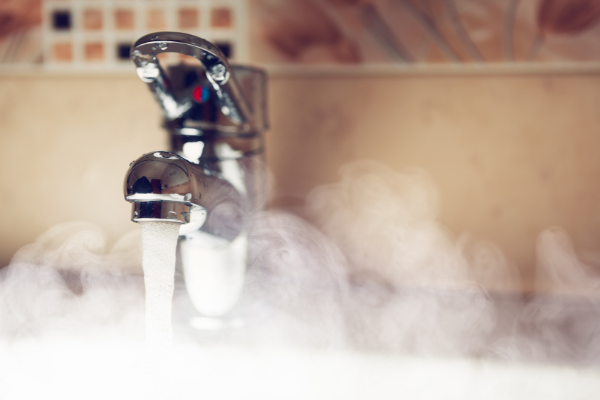
Today’s dishwashers have come a long way since your mother drilled this practice into you. The same way you take a shower, it was common practice to need to run the cold water out of the tap to shorten your dishwasher’s cycle by giving it a “hot start.”
But with the phase out of phosphate-laden detergents in 2010, it is now more effective to allow the dishwasher water to start on the cool side in order to activate (but not destroy) the detergent’s enzymes. This gives the enzymes a chance to attack any food particles and begin breaking them down before the hot water comes in to clear them away.
One Last Fun Fact About the Dishwasher
If nobody else is going to invent a dishwashing machine, I’ll do it myself.
Josephine Cochrane
The dishwasher was invented by Josephine Cochrane in 1887. (Source: link) She liked to throw lavish dinner parties, but didn’t like to wash piles of dishes afterwards, and found her servants were carelessly chipping them. At first, her hand-cranked invention sold well to hotels, restaurants, hospitals, and colleges. Not until the 1950s did dishwashers become a popular household luxury. In 1916, her company was bought out, later became KitchenAid and is now Whirlpool.
Wouldn’t you love to get PAID for exercising? I do!
Learn how in my post: How to get paid for drinking water, eating food, and taking steps every day!
Conclusion
Once my husband and I started following these guidelines, we saw a marked drop in our household water bill! We also had fewer broken dishes and fewer arguments. And we spend less time on the dishes, and more time arguing about more important things… like the proper way to load the toilet paper roll…
And whether we’ll ever convince the kids to load the dishwasher at all…
Did this article dispel any old-wives tales for you? Are there any die-hard old habits you’ll be changing after hearing the science behind why and how you should properly load the dishwasher? Sound off in the comments below!

